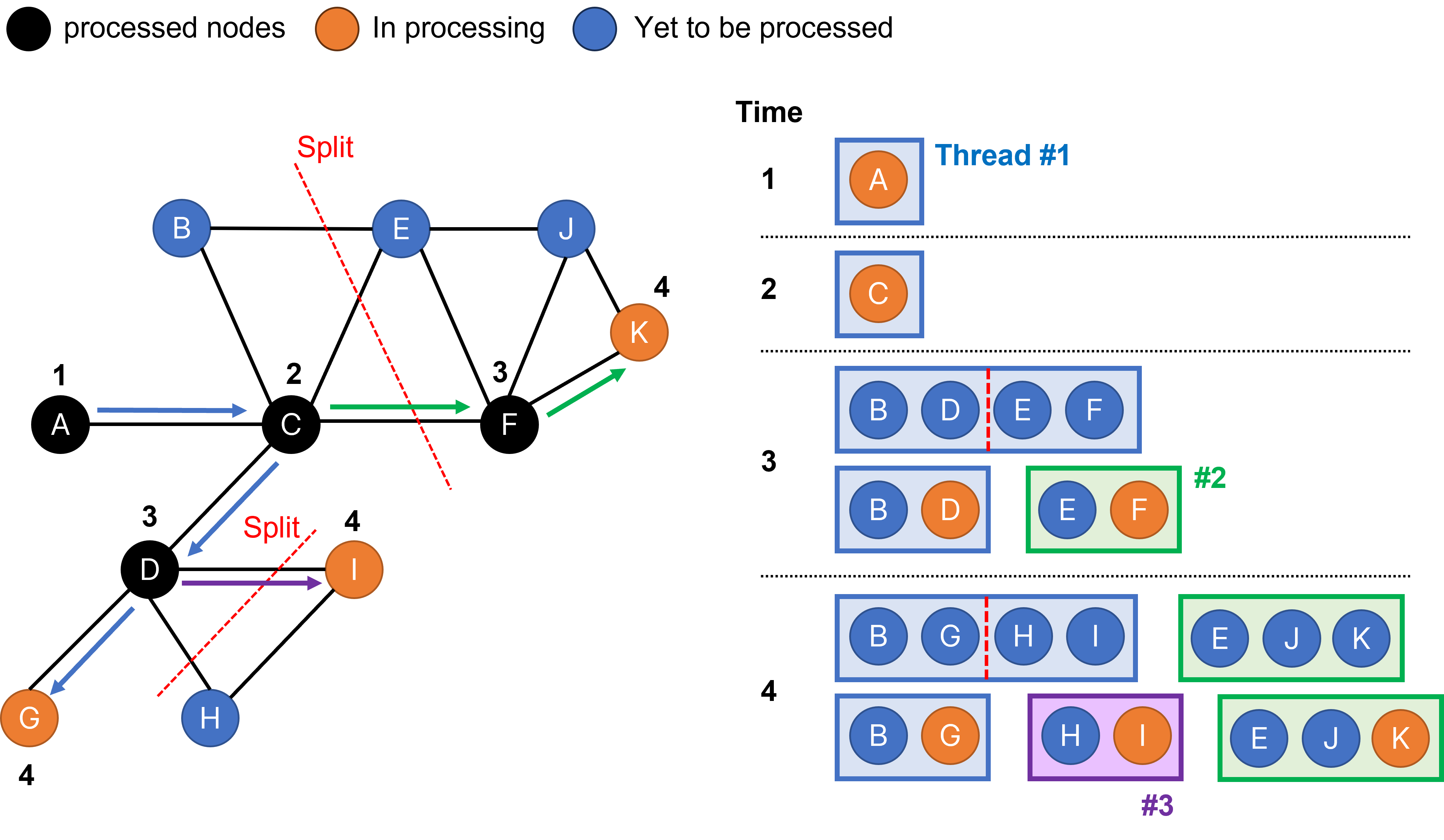CAVE is a graph processing engine for storing, accessing, and performing graph analytics on SSDs. CAVE considers SSD’s supported concurrency through its internal parallelism as a key property to exploit and it does so via issuing carefully tuned concurrent I/Os to the graphs stored on a single SSD. CAVE adopts a natural blocked file format based on adjacency lists and uses a concurrent cache pool for data blocks to provide ease of implementation of different algorithms.
Goto ./cpp folder, then run make for building.
cd cpp
makeClang compiler is specified by default for its better support and performance of multi-threading. Using GCC is okay but we won't guarantee the performance.
We tested in the following configurations:
- RedHat Linux 4.9, Clang 11, EXT4 file system.
- Windows 11, GCC 13 + LLVM + UCRT toolchain from winlibs.com, NTFS file system.
We developed a parser to convert common graph data into our binary file structure. It provides simple support for standard adjacent list, edge list files in plain text format, as well as binary adjacency and edge list for compact storage and faster parsing. Please check /scripts/graph_parser.py and documentation of NetworKit package to convert other types of data or make a binary file from plain texts.
Data files with suffix .adjlist, .edgelist, .binadj and .binedge will be automatically detected. Otherwise please indicate the file format by the -format argument.
./bin/parser <input_data_path> -format (adjlist/edgelist/binedge/binadj)/bin includes executables of all algorithms to be tested. We provide BFS, DFS, WCC, PageRank, and Random Walk out of the box. You can implement your algorithms following similar codes.
Our executables supports the following arguments for benchmark usages.
./bin/[algo] <parsed_data_path> (cache/thread) [args]The following are parameters for the benchmark.
-
For cache tests, there's only one argument [0,1,2,3] states that which cache size list you want to run:
- 0: Only 1024MB. For sanity check.
- 1: [1,2,3,4,5,10,25,50]. Suggest use for small datasets < 50MB.
- 2: [20,40,60,80,100,200,500,1000]. For dataset like soc-LiveJounal1 sized ~1GB.
- 3: [128,256,...,16384]. For very large dataset like com-Friendster.
-
For thread tests, 3 arguments are available.
- The first one is the minimum number of threads, the second one is the maximum. It tests from the minimum by the power of 2 to the maximum.
- The third one is optional, for specifying cache size (in MB) for all tests. By default it is 1024MB.
Test results will be put in log folder in csv format.
-
Benchmark BFS algorithm on CA-GrQc dataset.
# Parse data ./bin/parser ../data/CA-GrQc.txt -format edgelist # Benchmark ./bin/bfs ../data/CA-GrQc.bin thread 1 256 ./bin/bfs ../data/CA-GrQc.bin cache 0
-
Benchmark WCC algorithm on soc-LiveJournal1 dataset.
# Parse data ./bin/parser ../data/soc-LiveJournal1.binadj # Benchmark ./bin/wcc ../data/soc-LiveJournal1.bin cache 1
To demonstrate the benefits of our system, we implemented parallel algorithms of breadth-first search (BFS), depth-first search (DFS), and weakly connected components (WCC). These algorithms are in /algorithm, and can be executed and benchmarked by running corrsponding executables.
While DFS is inherently a serialized algorithm, it is possible to enhance its performance by introducing parallelism through unordered or pseudo depth-first search technique.
We take inspiration from this idea and we incorporate a mechanism to monitor the size of the vertex stack for each thread in our implementation. After visiting the neighbors of a vertex, we check if the size of the stack exceeds a predefined threshold. If it does, the stack is evenly divided into two smaller stacks, and one of these stacks is assigned to a new thread for further exploration.
Thread pool library comes from BS::thread-pool, a fast, lightweight, and easy-to-use C++17 thread pool library.
To support parallel hashmap used in cache pool, we use The Parallel Hashmap, a set of excellent hash map implementations, as well as a btree alternative to std::map and std::set.
Unordered parallel DFS refers to ideas in A work-efficient algorithm for parallel unordered depth-first search.

